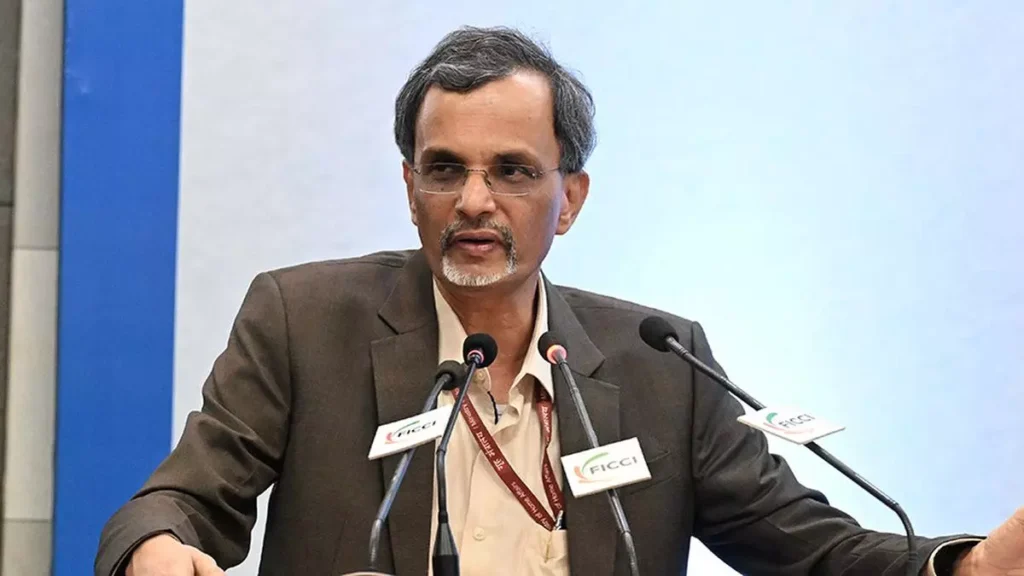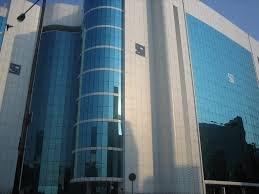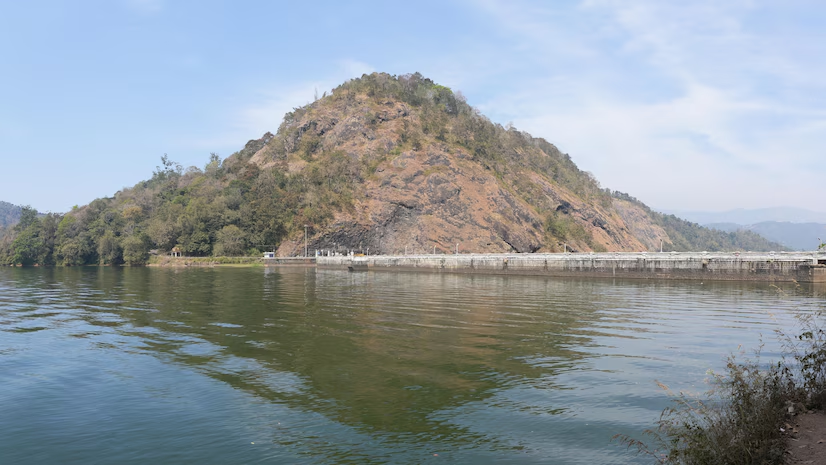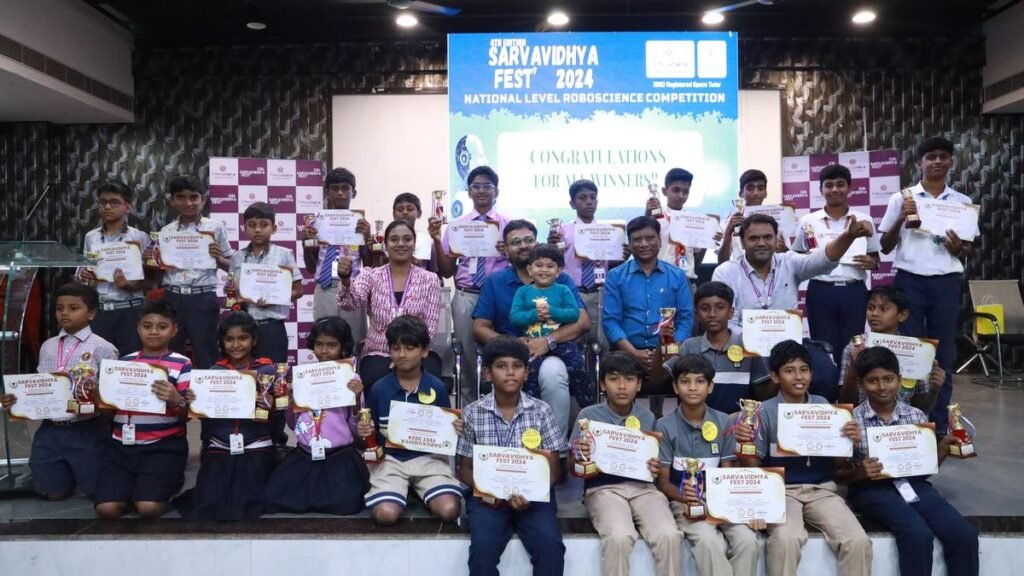Daily Current Affairs
Table of Content
Banking and Finance
- Centre-RBI disagreement deepens over inflation and rate cuts
- SEBI proposes to overhaul norms for SME IPOs
- SME IPOs: Sebi proposes 2x hike in application size
- Irdai urges bankers to focus on core job, not sell insurance alone; avoid mis-selling
Economy
- Unemployment rate dips to 6.4% in September quarter: Survey
Agri Business
- Availability of organic manure not enough to meet India’s demand for fertilizers
- No basis for claims of large-scale public distribution system leak: Govt
- One tonne of burnt stubble causes 20 kg soil nitrogen loss, say scientists
- Reservoir water levels steady, except in North India, shows data
National Affairs
- FTA negotiations with UK to resume next year
- National-level roboscience competition ‘Sarvavidya Fest 2024’ concludes
- Today’s children are confronting a more unpredictable, hazardous environment than any previous generation: UNICEF report
Banking and Finance
- Centre-RBI disagreement deepens over inflation and rate cuts

Indian Inflation Targeting and Interest Rate Cuts
- The Centre and RBI are reportedly contrasting on interest rate cuts and inflation targeting.
- Chief Economic Advisor V Anantha Nageswaran argues that retail inflation is largely driven by key commodities like tomato, onion, potato (TOP), gold, and silver.
- Nageswaran suggests that excluding these items, the inflation rate would drop to approximately 4%.
- This comes after Finance Minister Nirmala Sitharaman and Commerce Minister Piyush Goyal emphasized the need for more affordable bank interest rates during industries’ ramp-up and capacity building.
- RBI Governor Shaktikanta Das emphasized that food inflation has a weight of about 46% in headline inflation.
- The rate-setting monetary policy committee has kept the repo rate steady at 6.50% in its last 10 consecutive meetings to stem inflationary pressures.
- The CEA also notes India’s bilateral trade surplus with the US and the potential for import tariffs under the Trump regime.
RBI’s Role in India’s Financial System
- Manages the issue and supply of the Indian rupee.
- Regulates the banking sector and acts as the bankers’ bank.
- Manages public debt and acts as the banker to the government and the banking system.
- Uses monetary policy to create financial stability in India.
- Supports the government in its developmental projects and policies.
- Established in 1935 under the Reserve Bank of India Act, 1934.
- Initiatives include raising awareness about fake currency and introducing Magnetic Ink Character Recognition (MICR) technology for cheque processing.
2. SEBI proposes to overhaul norms for SME IPOs

SEBI Proposal for SME IPOs
- SEBI proposes doubling or quadrupling the minimum application size in SME IPOs from ₹1 lakh.
- Offers should only be made if the issue size is more than ₹10 crore and the operating profit is ₹3 crore for at least two out of three financial years preceding the application.
- Related party norms under LODR Regulations will be extended to SME listed entities, except for those whose paid-up capital and net worth does not exceed ₹10 crore and ₹25 crore.
- Listed firms will be required to submit shareholding pattern, statement of deviations, and financial results every quarter.
- The regulator plans to divide the non-institutional category (NII) into two sub-categories akin to mainboard IPOs.
- Minimum allottees in SME public issues may be increased to 200 from existing 50.
- Lock-in on minimum promoter contribution in SME IPO will be increased to five years from 3 years.
- Funds raised for general corporate purposes in SME IPO may be restricted to 10% of issue size or ₹10 crore, whichever is lower.
- Post-listing exit opportunity for dissenting shareholders may be provided in SME chapter in line with main board provisions.
- Fees paid to merchant bankers will have to be disclosed in the RHP.
SEBI Overview
- Regulatory body for securities and commodity market in India.
- Established on 12 April 1988 as an executive body.
- Acquired statutory powers on 30 January 1992 through the SEBI Act, 1992.
- Headquarters in Mumbai, Maharashtra.
- Parent department: Ministry of Finance, Government of India.
3. SME IPOs: Sebi proposes 2x hike in application size
Securities and Exchange Board of India (Sebi) proposes stiffer listing regulations for SMEs.
- The move follows allegations of funds and proceeds from IPOs being allegedly diverted, circular transactions to inflate prices, and booking fictitious transactions.
- The proposed measures include doubling the minimum application value to ₹ 2 lakh, restricting the offer for sale limit to 20% of the issue size, and mandating the appointment of monitoring agencies.
- Sebi is considering an increase in the minimum number of allottees from current 50 to 200 to declare an SME IPO successful.
- The lockin on minimum promoter contribution in SME IPO shall be increased to 5 years.
Economy
- Unemployment rate dips to 6.4% in September quarter: Survey
Unemployment Rate in Urban Areas in FY24
- Unemployment rate for people aged 15 and above in urban areas dropped to 6.4% in July-September quarter, according to the National Sample Survey Survey (NSSO).
- The rate was 6.6% in the previous April-June quarter of FY25.
- Female unemployment rate declined to 8.4% in July-September 2024 from 8.6% in the same quarter a year ago.
- Male unemployment rate declined to 5.7% in July-September 2024 from 6.6% in the same quarter a year ago.
- Labour force participation rate in Current Weekly Status (CWS) increased to 54.4% in July-September from 49.3% in the same quarter a year ago.
- The NSSO launched the PLFS in April 2017.
- The CWS approach defines unemployment as a person who did not work for one hour but sought or was available for work at least for one hour.
National Sample Survey Office (NSSO) Overview
- Conducts nationwide surveys on socio-economic topics across India.
- Helps central and state governments with policy making and development planning.
- Collects data through household interviews, the Annual Survey of Industries (ASI), and other surveys.
- Supervises area enumeration and crop estimation surveys conducted by state agencies.
- Part of the Ministry of Statistics and Programme Implementation (MoSPI).
- Has four divisions: Survey Design and Research Division (SDRD), Field Operations Division (FOD), Data Processing Division (DPD), and Coordination and Publication Division (CPD).
Agri Business
- Availability of organic manure not enough to meet India’s demand for fertilizers

Crop Nutrient Importance in India
- India relies on both chemical and organic crop nutrients for self-sustainability due to the high organic carbon in tropical climates.
- To produce 1 tonne of rice, 20 kg of nitrogen and potash, each, and 3.5 kg of phosphorus are required.
- To maintain current productivity of 5-6 tonnes/hectare in rice, 100-120 kg of nitrogen and potassium are needed.
- The availability of organic manure is not high to replace chemical fertilisers completely.
- To improve soil health conditions, both organic and inorganic crop nutrients must be applied.
- A 2023 study showed 90% deficiency in nitrogen and phosphorus in 90% of the agricultural land, while 50% of land is deficient in potash.
- The crop nutrient ratio (N:P:K) has come down to 5:1.8:1, close to the recommended level of 4:2:1.
- Zinc deficiency has been reduced to 40% of the total cultivable land from 50% a decade ago.
- The practice of natural farming, different from organic farming, shows that crop productivity can be maintained after a few years if a farmer shifts from chemical farming.
Natural vs Organic Farming
- Natural farming is completely chemical-free, while organic farming allows for some off-farm organic and biological inputs.
- Natural farming promotes organic matter decomposition on soil surface, while organic farming uses crop rotation, compost, and biological pest control.
- Natural farming integrates crops, trees, and livestock, while organic farming focuses on soil health and avoids synthetic chemicals.
- Natural farming uses biomass mulching and a year-round green cover.
- Organic farming uses natural mined minerals for soil correction.
- Both farming methods can improve yield, health, and reduce water consumption. Organic farming may lead to higher food costs and lower yields.
2. No basis for claims of large-scale public distribution system leak: Govt

Government Challenges Large-Scale Public Distribution System Leakage
- The government argues that a recent report suggests a 28% leakage in the public distribution system (PDS).
- The data from the Household Consumption Expenditure Survey (HCES) of 2022-23 includes cereal consumption from multiple sources, complicating the correlation with PDS offtake.
- Monthly per capita cereal consumption in rural and urban areas is 5.32 kg of rice and 3.93 kg of wheat respectively.
- The annual household consumption exceeds 85.56 million tones/mt, including consumption from PDS sources.
- The government clarifies that offtake figures should not be confused with PDS stocks used for household distribution.
- The report shows that almost 28% of the grain supplied by the Food Corporation of India and state governments never reach the intended beneficiaries, resulting in a financial loss of about Rs 69,108 crore.
Public Distribution System (PDS) Overview
- Joint responsibility of Central and State governments.
- Distributes essential commodities like wheat, rice, sugar, and kerosene.
- State governments manage operational aspects like food allocation, eligibility identification, ration card issuing, and FPS supervision.
- Additional items include pulses, edible oils, iodized salt, and spices.
- Eligibility: Families below poverty line receive 35 kg of rice or wheat per month, households above poverty line receive 15 kg.
Household Consumption Expenditure Survey (HCES) Overview
- Gathers data on household consumption and expenditure patterns.
- Uses data for national accounts calculation, poverty monitoring, consumer price indices preparation, macroeconomic indicators, food security assessment, and statistical indicators.
- Conducted every 3-5 years, covering 7,000 to 20,000 households.
- 2022-2023 survey covered 1,55,014 rural households and 1,06,732 urban households.
- Collects data on acquisition, consumption, socioeconomic status, education, and household characteristics and demographics.
3. One tonne of burnt stubble causes 20 kg soil nitrogen loss, say scientists

Indian Council of Agricultural Research (ICAR) warns against stubble burning due to soil nutrient loss.
- Each tonne of stubble burnt results in a loss of 12-13 kg of phosphorus, 35 kg of potassium, and 20 kg of nitrogen.
- ICAR Director General Himanshu Pathak recommends against burning stubble as it harms everyone.
- The practice of stubble burning is estimated to account for up to 40% of Delhi’s pollution.
- Farm fire incidents in Rajasthan and Delhi have reached their highest levels since 2020, with Rajasthan reporting 2,060 cases and Delhi 12.
- Between September 15 and November 17, IARI detected 25,108 farm fire events across six states.
- Delhi recorded its second-worst air quality in six years on Monday.
Stubble Burning: A Global Pollution Risk
- Stubble burning is the intentional burning of leftover plant material after harvesting grains like rice and wheat.
- It’s a common practice in areas using combined harvesting methods to clear fields for the next crop.
- It’s the third largest source of air pollution globally, releasing harmful pollutants like carbon dioxide, volatile organic compounds, nitrogen oxides, and hydrocarbons.
- In Delhi, India, up to 58% of air pollution is due to burning crop residues.
- In India and Pakistan, stubble burning is illegal, but enforcement is weak.
- Farmers are adopting new technologies to reduce field burning, like The Nature Conservancy’s PRANA project.
Indian Council of Agricultural Research (ICAR)
- Autonomous body responsible for coordinating agricultural education and research in India.
- Reports to the Department of Agricultural Research and Education, Ministry of Agriculture.
- Presidented by Union Minister of Agriculture.
- Largest network of agricultural research and education institutes globally.
- Recommends establishment of National Commission for Higher Education and Research.
- Regulates agricultural education under ICAR, Veterinary Council of India, and Indian Council of Forestry Research and Education.
- Includes several natural resource management institutes.
4. Reservoir water levels steady, except in North India, shows data

Rabi Crop Sowing in India
- Water levels in reservoirs, especially those with irrigation potential, are crucial for sowing rabi crops.
- Central Water Commission data shows 155-odd reservoirs had 86% of full reservoir levels, above normal levels.
- 11-odd reservoirs in northern India showed lower water levels than last year.
- Ministry of Agriculture‘s assessment shows root-zone soil moisture from October 25-31, 2024, is similar to the past nine-year average.
- Post-monsoon showers have been nearly 9% below average.
National Affairs
- FTA negotiations with UK to resume next year

India-UK Free Trade Agreement Relaunch
- India and the UK are set to relaunch talks for a free trade agreement (FTA) in the new year.
- The move follows a pause due to general elections in both countries.
- The announcement was made following a meeting between Prime Minister Narendra Modi and British Prime Minister Keir Starmer.
- The two leaders expressed confidence in the negotiating teams’ ability to address remaining issues to mutual satisfaction.
- The India-UK Comprehensive Strategic Partnership has been negotiating since January 2022.
- The UK is India’s 14 largest trade partners and the fourth largest export market.
- In the first six months of this financial year, bilateral trade between the two countries stood at $11.5 billion.
- The UK sees a trade agreement with India as essential for establishing a post-Brexit trade relationship.
2. National-level roboscience competition ‘Sarvavidya Fest 2024’ concludes

Sarvavidya Fest 2024: 4th Edition of i-Robochakra’s Roboscience Competition
- The national-level roboscience competition saw enthusiastic participation from students.
- The event included Robotic Championship, Robotic Football, Robot Strategy Game, Robo Golf, and an innovators exhibition featuring Arduino-based projects.
- The projects addressed real-world challenges like food waste reduction, smart farming, and recycling.
- 15 top teams from each city advanced to the finals, totaling 45 teams.
- The finals took place on November 13 at Hindusthan College of Arts and Science, Coimbatore.
- Chief guests included B.A. Subramani, V. Sreekumar, and Priya Satish Prabhu.
- Winners received cash prizes, trophies, and certificates.
- Categories 1 winners: Rithvik, Lakshana, Harsha Mirudhula, Kavin Vishwa, Jayapugal, Dhanwant, Rithik, Sharon, Vaibhav, Kanish, Ryan Jerry, Aadithya Krupa, St. Mary’s School, Salem.
- Categories 2 winners: Lingesh Kumar, Prajan, Divya Sudhan, AVB Matric School, Coimbatore.
3. Today’s children are confronting a more unpredictable, hazardous environment than any previous generation: UNICEF report

UNICEF’s State of the World’s Children 2024 Report
- Highlights the global crisis with nearly half of all children living in high-risk climate and environmental countries.
- Examines three long-term global forces: demographic shifts, climate and environmental crises, and frontier technologies.
- Highlights the intensifying impacts of climate destabilization, biodiversity collapse, and pollution threats on children’s lives.
- Highlights the vulnerability of children’s developing bodies to pollution and extreme weather, including air pollution, disease spread, and food insecurity.
- Highlights the long-term effects of climate-related disasters on children’s mental health and development.
Global School Closures and Child Population Stabilization
- Since 2022, 400 million students worldwide have experienced school closures due to extreme weather.
- These closures violate child rights, inhibit learning, and stifle economic growth.
- Climate and environmental hazards also displace children from their homes.
- By 2050s, the global child population is projected to stabilize at around 2.3 billion.
UNICEF: A Global Organization
Mission:
- Aims to help children and young people survive, thrive, and reach their full potential.
Work:
- Provides lifesaving help and hope in over 190 countries and territories.
- Supports child health, nutrition, safe water, sanitation, quality education, and HIV prevention and treatment.
History:
- Established in 1946 to provide emergency food and healthcare to children and mothers in WWII-damaged countries.
- Becomes a permanent part of the United Nations System in 1953.
Headquarters:
- Headquartered in New York.










